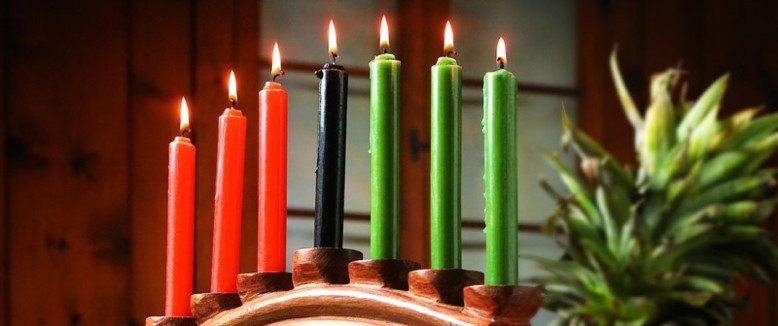
Habari gani? What’s the news? This month marks the 52ndannual celebration of Kwanzaa, the cultural-based holiday created for people of African descent and culture. Kwanzaa celebrates a shared African history in a similar manner that Christians honor the birth of Jesus Christ during Christmas and Jews on Hanukkah commemorate the purification and rededication of the Holy Temple in Jerusalem. The harvest celebrations on which Kwanzaa is based can be traced back to Nubia and Egypt among other African countries. In case you’re thinking of celebrating this relatively new holiday this year, here are 10 things you may want to know:
1.Maulana Karenga, professor and chair of the Department of Africana Studies at California State University in Long Beach, created Kwanzaa in 1966 at the height of the Black Liberation and Civil Rights movements of the 1960s. It was an effort to reinforce family, community and culture among Black Americans.
2. Though Kwanzaa falls into step with major December holidays like Christmas and Hanukkah, it has no major religious affiliation or origin. Soon after its inception, Karenga asserted that Kwanzaa was originally intended to be an “oppositional alternative to Christmas.” But as the decades progressed, Karenga’s views changed. It is no longer intended to replace Christmas in the African-American community, according to his message on the official Kwanzaa website.
3. Seven is an important number in Kwanzaa. The holiday is celebrated over a period of seven days. From December 26 to January 1, the Nguzo Saba (the seven core principles of African tradition) becomes the focus of each day.
4. The seven core principles of African tradition are umoja (unity), kujichagulia (self-determination), ujima (collective work), ujamaa (cooperative economics), nia (purpose), kuumba (creativity) and imani (faith).
5. The menorah is used in the Jewish celebration of Hanukkah, while the kinara – a seven-branch candleholder – is used for different candles that represent the Nguzo Saba. Three candles are red, three candles are green, and the last candle (the center candle) is black. One candle is lit each day.
6. In addition to the Nguzo Saba and the kinara, Kwanzaa symbols include the Bendera, the official flag. The colors correlate with the candle colors: black, red and green. Black symbolizes the people, red symbolizes the struggle and green symbolizes the future and hope that comes from the struggle.
7. Celebrants give gifts on December 31. Gifts are sometimes handmade and given mainly to children. They must always include a book and a heritage symbol. The book is to emphasize the African value of learning. The heritage symbol is to reaffirm the African commitment to tradition and history.
8. Kwanzaa can be spelled one of two ways: Kwanzaa or Kwanza, but Kwanzaa is most often used. The name is derived from the Swahili phrase “matunda ya kwanza” which means “first fruits of the harvest.”
9. Kwanzaa is a pan-African holiday, which means it is a part of a larger movement that promotes solidarity among all people of African descent, but one doesn’t have to be black to partake in the celebration. It is important for participants (regardless of ethnicity) to understand the historical and cultural implications of the holiday, that it is rooted in the beauty of African tradition and the continent’s diverse subcultures.
10. Over 28 million people worldwide celebrate Kwanzaa annually, according to Karenga.



